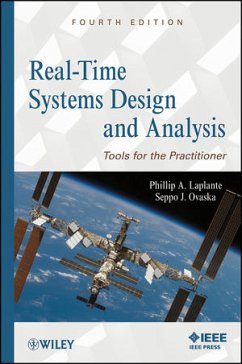
Business and Scientific Workflows (eBook, PDF)
A Web Service-Oriented Approach
Versandkostenfrei!
Sofort per Download lieferbar
112,99 €
inkl. MwSt.
Weitere Ausgaben:

PAYBACK Punkte
0 °P sammeln!
Focuses on how to use web service computing and service-based workflow technologies to develop timely, effective workflows for both business and scientific fieldsUtilizing web computing and Service-Oriented Architecture (SOA), Business and Scientific Workflows: A Web Service¿Oriented Approach focuses on how to design, analyze, and deploy web service¿based workflows for both business and scientific applications in many areas of healthcare and biomedicine. It also discusses and presents the recent research and development results.This informative reference features application scenarios that i...
Focuses on how to use web service computing and service-based workflow technologies to develop timely, effective workflows for both business and scientific fields
Utilizing web computing and Service-Oriented Architecture (SOA), Business and Scientific Workflows: A Web Service¿Oriented Approach focuses on how to design, analyze, and deploy web service¿based workflows for both business and scientific applications in many areas of healthcare and biomedicine. It also discusses and presents the recent research and development results.
This informative reference features application scenarios that include healthcare and biomedical applications, such as personalized healthcare processing, DNA sequence data processing, and electrocardiogram wave analysis, and presents:
With workflow-driven service composition and reuse being a hot topic in both academia and industry, this book is ideal for researchers, engineers, scientists, professionals, and students who work on service computing, software engineering, business and scientific workflow management, the internet, and management information systems (MIS).
Utilizing web computing and Service-Oriented Architecture (SOA), Business and Scientific Workflows: A Web Service¿Oriented Approach focuses on how to design, analyze, and deploy web service¿based workflows for both business and scientific applications in many areas of healthcare and biomedicine. It also discusses and presents the recent research and development results.
This informative reference features application scenarios that include healthcare and biomedical applications, such as personalized healthcare processing, DNA sequence data processing, and electrocardiogram wave analysis, and presents:
- Updated research and development results on the composition technologies of web services for ever-sophisticated service requirements from various users and communities
- Fundamental methods such as Petri nets and social network analysis to advance the theory and applications of workflow design and web service composition
- Practical and real applications of the developed theory and methods for such platforms as personalized healthcare and Biomedical Informatics Grids
- The authors' efforts on advancing service composition methods for both business and scientific software systems, with theoretical and empirical contributions
With workflow-driven service composition and reuse being a hot topic in both academia and industry, this book is ideal for researchers, engineers, scientists, professionals, and students who work on service computing, software engineering, business and scientific workflow management, the internet, and management information systems (MIS).
Dieser Download kann aus rechtlichen Gründen nur mit Rechnungsadresse in D ausgeliefert werden.













